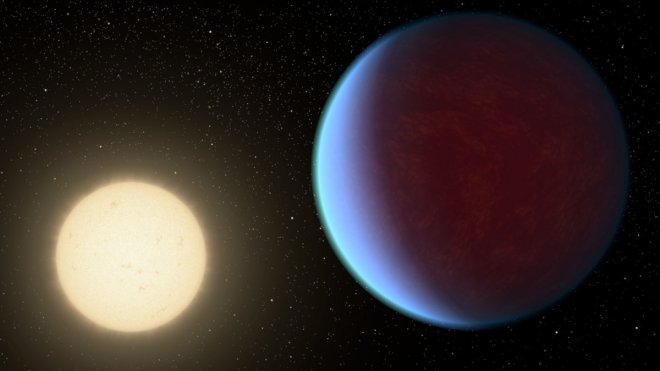
A new study has revealed that the exoplanet 55 Cancri e, which is twice as big as Earth, most likely has an atmosphere thicker than Earth's but with ingredients that could be similar to those of the only living planet's atmosphere.
Researchers claim that the atmosphere of this mysterious planet could contain nitrogen, water and even oxygen molecules that are found in our atmosphere, too. However, the atmosphere has a much higher temperatures throughout.
According to the study that was published in The Astronomical Journal, the density of the planet is also similar to Earth. This suggests that the exoplanet is rocky too. However, the intense heat from the host star would be far too great to support life and not maintain liquid water.
"Scientists have been debating whether this planet has an atmosphere like Earth and Venus, or just a rocky core and no atmosphere, like Mercury. The case for an atmosphere is now stronger than ever," study co-author Renyu Hu, astronomer at NASA's Jet Propulsion Laboratory in Pasadena, California, said.
The planet, which is believed to have lava flows on its surface and large amount of diamonds in its interior by some scientists, is so close to its star, the same side of the planet always faces the star, such that the planet has permanent day and night sides.
The researchers have used an improved model of how energy would flow throughout the planet and radiate back into space. As a result, they found that the night side of the planet is not as cool as previously thought.
With an average of 1,300 to 1,400 degrees Celsius, the "cold" side is still quite toasty by Earthly standards. Meanwhile, the hot side of the planet averages 2,300 degree Celsius.
The study said that the difference between the hot and cold sides would need to be more extreme if there were no atmosphere.
All these findings are based on data from NASA's Spitzer Space Telescope. Between June 15 and July 15, 2013, the telescope observed 55 Cancri e using a camera specially designed for viewing infrared light, which is invisible to human eyes.
After comparing the changes in brightness, the researchers realised an atmosphere with volatile materials could best explain the temperatures.
(With inputs from Indo-Asian News Service)









